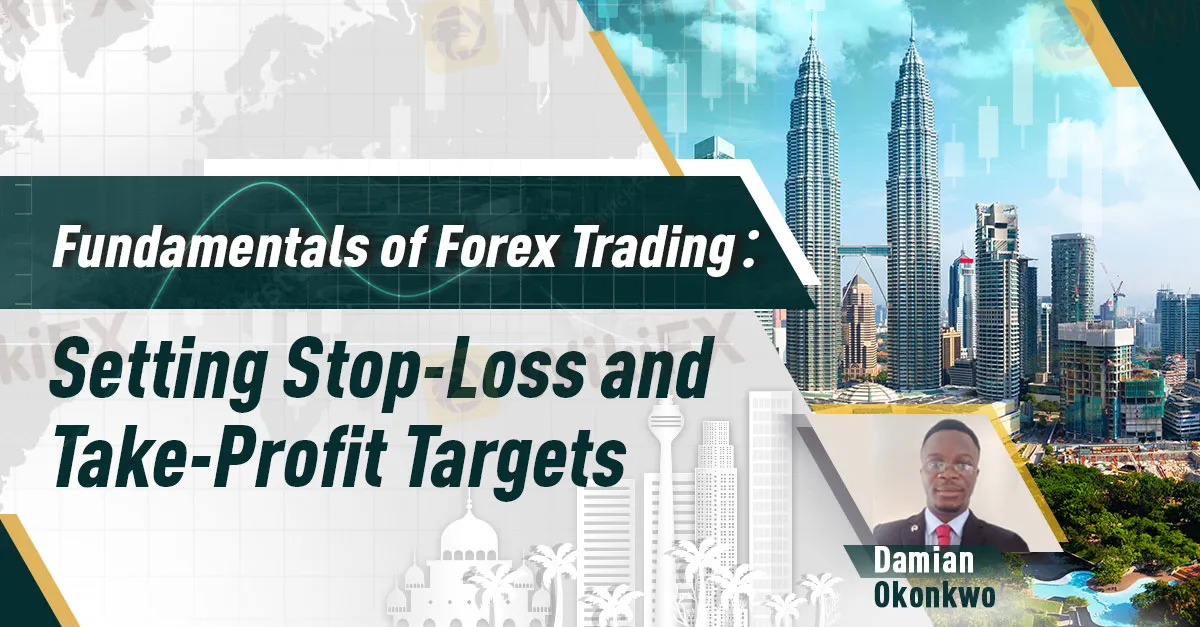简体中文
繁體中文
English
Pусский
日本語
ภาษาไทย
Tiếng Việt
Bahasa Indonesia
Español
हिन्दी
Filippiiniläinen
Français
Deutsch
Português
Türkçe
한국어
العربية
Fundamentals of Forex Trading: Setting Stop-Loss and Take-Profit Targets
Abstract:In the world of Forex trading, setting stop-loss and take-profit targets is crucial for managing risk and optimizing your trading strategy. These orders act as your safety net and profit-taking mechanism, ensuring that your trading decisions are disciplined and well-informed

By: Damian Okonkwo

Introduction
An important tool available for forex traders to manage their risk effectively while trading is the use of stop-loss and take-profit targets. However, not all traders today are at home with the best way to use these tools. In this article, we will delve into the fundamentals of how to set these targets to enhance your Forex trading strategy.
Understanding Stop-Loss Orders
A stop-loss order is a predetermined point at which a trader decides to exit a losing trade to limit potential losses. It acts as a safety net that helps traders avoid catastrophic losses when the market moves against their positions.
Important Factors to Consider When Setting Stop-loss Orders
Here are some essential principles to consider when setting stop-loss orders:
● Risk Tolerance: Before entering any trade, assess your risk tolerance. Determine the maximum amount of capital you are willing to risk on a single trade, usually represented as a percentage of your trading account balance.
● Technical Analysis: Utilize technical analysis tools to identify key support and resistance levels, trendlines, and chart patterns. These can guide you in placing your stop-loss at a strategic point where the market is likely to reverse.
● Volatility: Take into account the currency pair's historical volatility. More volatile pairs may require wider stop-loss levels to withstand price fluctuations, while less volatile pairs may need tighter stops.
● Time Frame: The time frame you're trading on matters. Short-term traders may need tighter stop-loss levels compared to long-term investors to account for intraday price swings.
● News and Events: Stay informed about economic events, news releases, and geopolitical factors that could impact the Forex market. Consider placing stop-loss orders beyond the reach of anticipated market volatility triggered by such events.
Setting Take-Profit Targets
A take-profit order is often seen as the opposite of a stop-loss order. It's the price level at which you decide to close a trade-in profit before the market reverses. Properly setting take-profit targets can help you secure gains and maintain discipline in your trading approach.
Important Factors to Consider When Setting Take-profit Targets
Here are key considerations for setting take-profit targets:
● Risk-Reward Ratio: It is important for traders to always consider their risk-reward ratio for each trade while setting their take-profit targets. A common ratio is 1:2, where you aim to make twice the amount you are risking. This helps ensure that your profitable trades outweigh losing ones.
● Technical Analysis: Just as with stop-loss orders, use technical analysis to identify potential resistance levels, chart patterns, or trend reversal points where you can place your take-profit orders.
● Trailing Stops: Consider using trailing stop orders that automatically adjust your take-profit level as the market moves in your favor. This allows you to capture larger gains during strong trends.
● Partial Profits: Instead of closing an entire trade at one take-profit level, you can consider taking partial profits at different levels to maximize potential gains while securing some profits.
Conclusion
In the world of Forex trading, setting stop-loss and take-profit targets is crucial for managing risk and optimizing your trading strategy. These orders act as your safety net and profit-taking mechanism, ensuring that your trading decisions are disciplined and well-informed.
Always remember that there is no one-size-fits-all approach to setting these targets. Your risk tolerance, trading style, and market analysis will influence your decisions. Continuously refine your approach, adapt to changing market conditions, and never forget the cardinal rule of trading: protect your capital.

Disclaimer:
The views in this article only represent the author's personal views, and do not constitute investment advice on this platform. This platform does not guarantee the accuracy, completeness and timeliness of the information in the article, and will not be liable for any loss caused by the use of or reliance on the information in the article.
Read more

CySEC reaches €20k settlement with ZFN EUROPE
According to report, the Cyprus Securities and Exchange Commission (CySEC) announced today that it has entered into a settlement agreement with ZFN EUROPE Ltd for the amount of €20,000. This settlement resolves a regulatory inquiry into ZFN Europe’s compliance with Cyprus’s Investment Services and Activities and Regulated Markets Law of 2017, as amended.

Prop Trading Firms vs. CFD Brokers: Who’s Winning the Retail Trading Race?
In recent years, a new breed of retailer-focused trading firms has emerged: proprietary (prop) trading outfits that recruit individual traders to trade the firm’s capital under structured rules. Boasting low entry costs, clear risk parameters, and profit-sharing incentives, these prop firms are rapidly winning over retail traders, many of whom previously traded Contracts for Difference (CFDs) with established online brokers. As prop trading revenues accelerate, a key question arises: Are CFD brokers losing business to prop firms?

Another ‘Tan Sri’ Targeted, RM347 Million in Assets Seized in MBI Scam
Malaysia’s police are stepping up their investigation into the MBI investment scam, a multi-billion ringgit fraud that has dragged on for nearly a decade. The Royal Malaysian Police (PDRM) is now planning to arrest another prominent figure with the title ‘Tan Sri’, following recent arrests and major asset seizures.

Tradu Joins TradingView for Seamless CFD and Forex Trading
Tradu, a global trading platform, integrates with TradingView for seamless CFD and forex trading, offering transparency, tight spreads, and fast execution.
WikiFX Broker
Latest News
Love, Investment & Lies: Online Date Turned into a RM103,000 Scam
Broker Took 10% of User's Profits – New Way to Swindle You? Beware!
Pi Network: Scam Allegations Spark Heated Debate
Broker Comparsion: FXTM vs AvaTrade
Account Deleted, Funds Gone: A New Broker Tactic to Beware Of?
Broker’s Promise Turns to Loss – Funds Disappear, No Compensation!
El Salvador and U.S. Launch Cross-Border Crypto Regulatory Sandbox
The Instagram Promise That Stole RM33,000
Coinbase Launches Bitcoin Yield Fund for Institutional Investors
Before You Trade the Next Big Thing, Remember the Dot-Com Collapse
Currency Calculator


